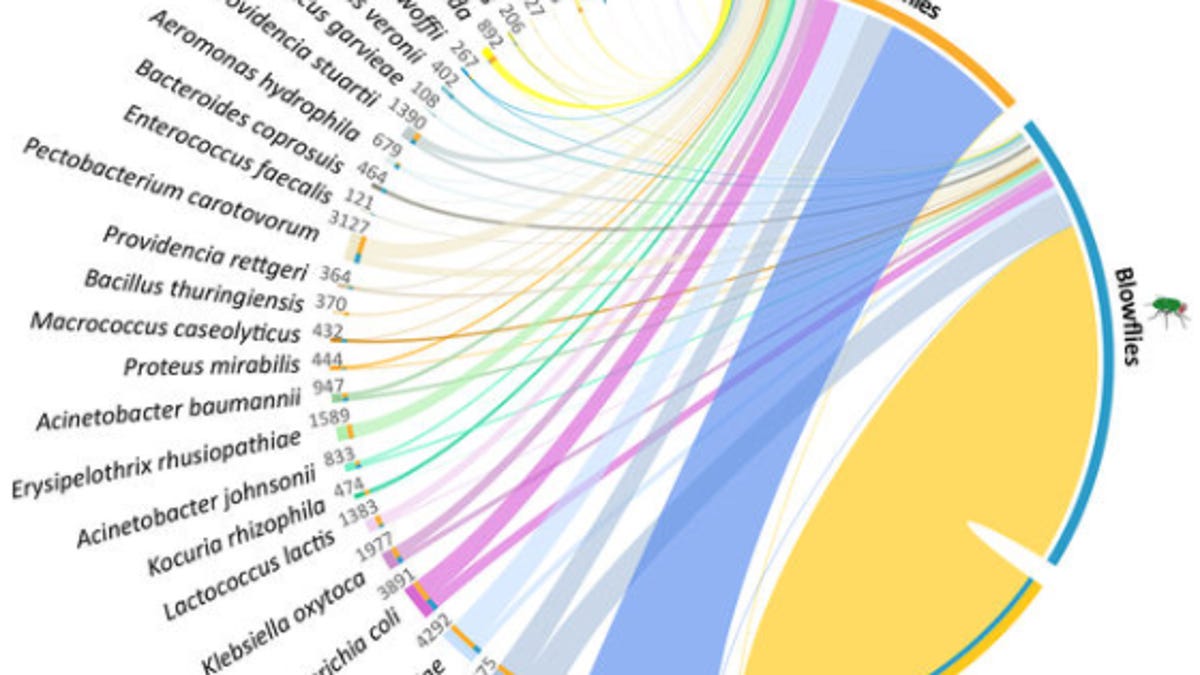Flies carry even more disease than we thought
Researchers discover that houseflies carry more kinds of dangerous bacteria than previously suspected.
The next time you spot a fly, try extra hard to stop it from landing on your food, especially if you live in a city.
A new study from Penn State's Eberly College of Science found that both blowflies and houseflies -- depending on their location -- are carriers for much more harmful bacteria than scientists previously thought.
The study, published Friday in Scientific Reports, focused on flies collected from urban, rural and natural sites in Brazil, the US and Singapore.
The urban sites where flies were gathered included a food market, a food court, a hospital, a city park and a landfill for household waste. Rural sites included farms with pigs, horses, chickens and cattle. And the natural environment was a protected area in the Amazon rainforest.
The scientists sequenced DNA samples from the head, thorax, abdomen, legs, and wings of blowflies (Chrysomya megacephala) and of houseflies (Musca domestica).
Houseflies are already suspected of transmitting at least 65 diseases to humans, including typhoid fever, dysentery, cholera, poliomyelitis, yaws, anthrax, tularemia, leprosy and tuberculosis, according to Penn State's Department of Entomology,
But the new study, entitled "The Microbiomes of Blowflies and Houseflies as Bacterial Transmission Reservoirs," also found 15 instances of Helicobacter pylori that was not previously expected to be transmitted by flies. H. pylori can cause stomach ulcers in humans.
The data also confirmed that flies leave behind a specific "microbial colony track, especially if the new surface supports bacterial growth." This isn't especially surprising considering that most flies land on feces and decaying matter to gather nutrients.
One of the more significant conclusions from the study: Flies in cities carry more pathogens than those in rural areas.
"It will really make you think twice about eating that potato salad that's been sitting out at your next picnic," Donald Bryant, professor of biotechnology at Penn State and co-writer of the study, told Science magazine. "It might be better to have that picnic in the woods, far away from urban environments, not a central park."
The study's findings are significant for more than just picnic planning. If fly microbiomes are "included in public health surveillance programs," the study said, "it will be possible to predict and prevent routes of transmission of microbes and potential pathogens."
Batteries Not Included: The CNET team reminds us why tech is cool.
CNET en Español: Get all your tech news and reviews in Spanish.


